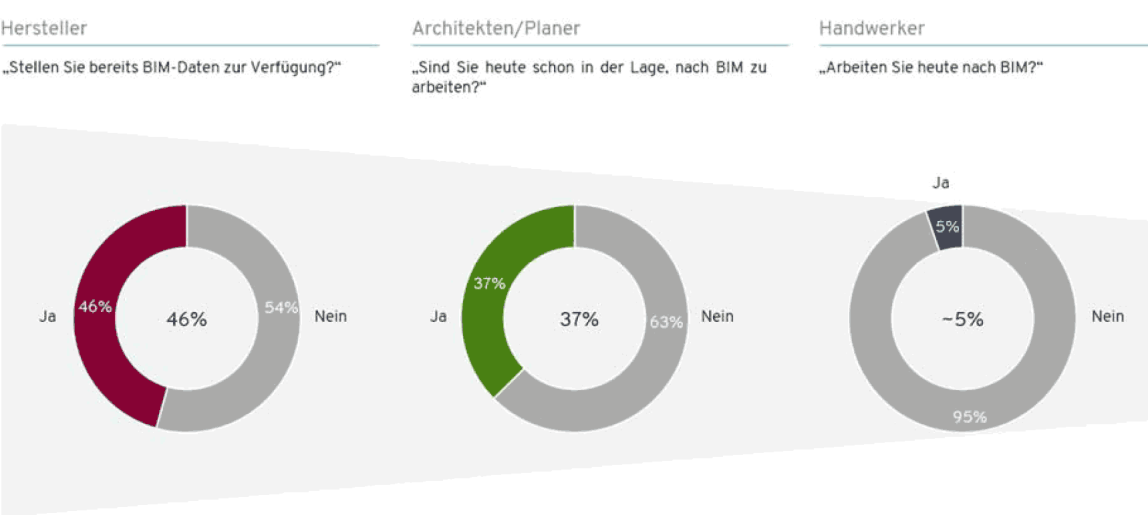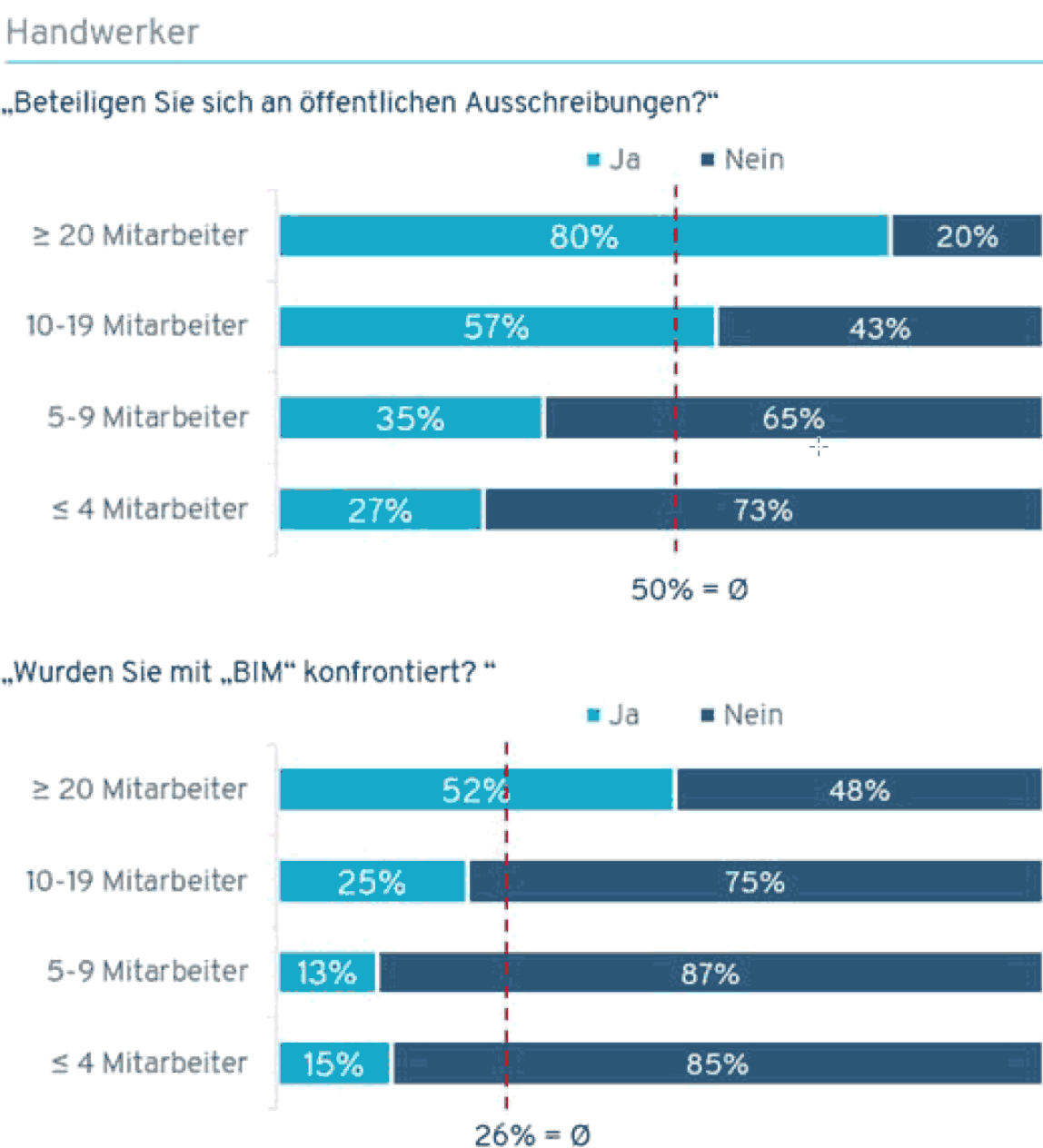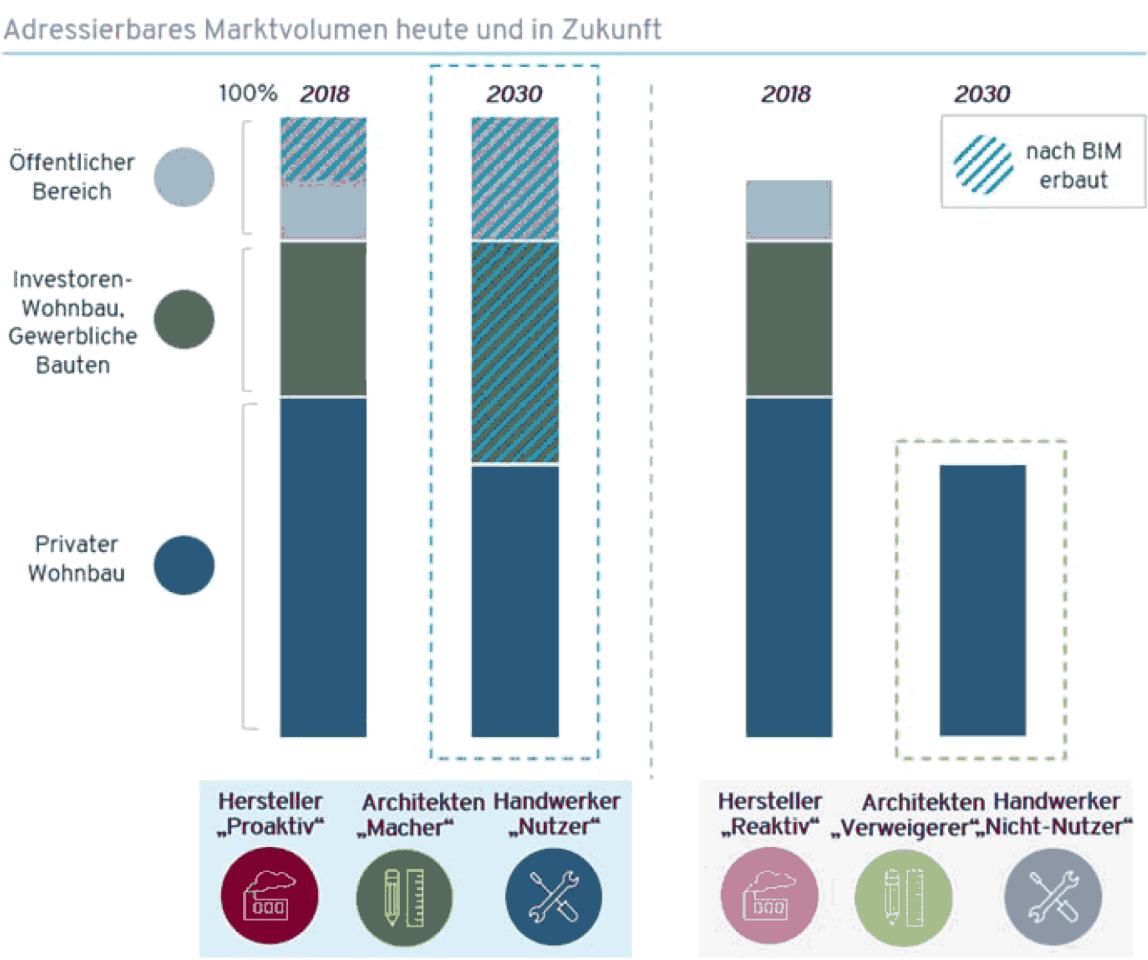SHK sector in the BIM check: ZVSHK creates basis for BIM use in the trades
Germany is only one of the emerging economies in terms of BIM use.

What significance does BIM have for the German HVAC sector? The Central Association of Sanitary Heating Climate (ZVSHK) has examined this question together with the consulting firm Munich Strategy in a study in whose name 1,400 stakeholders of the German HVAC industry were surveyed - manufacturers, architects, and craftsmen. "With the wealth of data we've collected, we can look at the three groups in our industry individually and in concert. In this way, current failures and future challenges, especially for skilled trades, can be identified, "says ZVSHK CEO Helmut Bramann, outlining the objective of the study" HVAC sector in the BIM check. Opportunities and challenges for craftsmen, architects and manufacturers. "

Graphic 1: The penetration with BIM differs clearly between the individual groups of the HVAC industry. Image source: Baulinks
The joint investigation can be expected that BIM will prevail in the local SHK industry long term. While the working method is already widespread in Western European countries such as Great Britain and the Netherlands, Germany is only one of the emerging economies in terms of its use. "That will change faster than many think today," expects Helmut Bramann. More and more clients will rely on BIM because comparisons between "BIM buildings" and buildings built in a traditional way made it clear that using BIM could reduce the total lifecycle costs by up to 30%. Important for this, however, is a unified understanding of BIM and building standards for use.
Another result of the study shows that BIM is handled and understood very differently in the different groups of the SHK industry. Acceptance is sinking along the value chain. While 46% of the manufacturers and 37% of the architects/planners are currently able to work according to BIM, this figure was only 5% among the craftsmen.
Only a quarter of the craft businesses have ever been confronted with BIM - even though half of all companies are involved in public tenders, which require BIM to work from 2020 onwards. The increased overhead and technical challenges are mentioned in all three groups as the most important reasons for not using BIM. At the same time, BIM users recognize an increase in efficiency in sales, planning, communication and processing.

Graph 2: Only a quarter of craft businesses were confronted with BIM - although half of them are involved in public tenders. Image source: Baulinks
The evaluation of the means of communication used in the industry proves that "analogue" channels such as e-mail and telephone still dominate the HVAC sector. Platform-based features such as portals or tendering tools that are required for BIM use only
- 36% of manufacturers,
- 9% of architects and
- 18% of the craftsmen.
The question of whether BIM is changing the decision-making processes in the sector reveals clear differences between the groups: while 40% of manufacturers assume that BIM is an opportunity for new providers in the market, only 2% of architects see this.
Conclusion of the study
BIM is currently the buzzword and driver of the digitization process also in the SHK sector. Digitization is more. It changes roles and business models. It is important to establish new data pool models that allow manufacturers to offer their products to a wider audience. However, as long as the architects do not change their selection process, the added value for the industry will be minimal.

Chart 3: Only those companies that adapt to BIM can continue to profit fully from the market development in the future.
SHK companies, which nowadays deal intensively with the subject of BIM, have the opportunity to successfully participate in future development. For the remaining players, the competitive environment will change significantly in the medium term, according to the study. They will inevitably have to focus on sub-segments of the market such as private housing, as well as renovation and repair work, in which BIM will initially not play any role. The study outlines the scenario that 75% of all construction projects will be implemented under BIM by 2030, as large commercial investors will demand BIM in addition to the public sector.
ZVSHK uses Open Datapool to create the basis for BIM use in the trades
In order to increase efficiency at all levels, all actors along the value creation process must network and integrate work processes. In the study, a future understanding of roles was worked out for each group in the industry:
The manufacturers become the "data supplier" and provide the relevant data in suitable quality and structure for the respective target group.
The architects as "gatekeepers" keep the planning process open to all participants along the value chain and demand data-based communication processes on both sides.
Craftsmen become "users": They expand their understanding of the use of integrated data as well as their understanding of their own operating processes and integrate the necessary software into their daily work.
"Only with a joint effort of craftsmen, manufacturers and architects can the BIM transformation of the HVAC sector succeed. Those who do not actively adapt to the new process and broaden their understanding will be left behind, "warns Dr. Constantin Greiner, study author and head of construction at Munich Strategy.
The Zentralverband Sanitär Heizung Klima has created the basis for the use of BIM in SHK-Handwerk with the portal "Open Datapool" introduced in 2017 - see article " Open-Datapool: ZVSHK bundles two- and three-stage manufacturer data for bathroom planning " from 8.12.2017:












